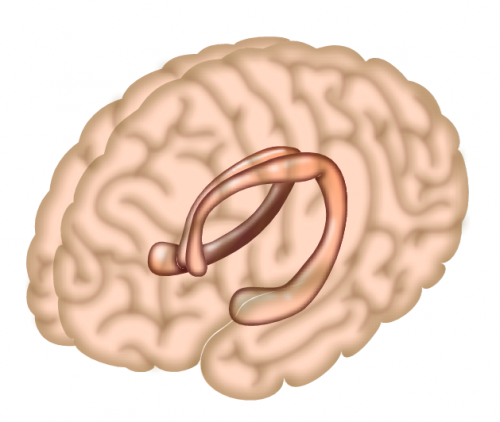June 10, 2016 report
fMRI study reveals brain working's during navigation

(Medical Xpress)—A team of researchers affiliated with several academic institutions in the U.S. has learned more about the way the brain works as a person both visualizes taking a trip, and then as the trip is taken. In their paper published in the journal Science, the team describes their studies using volunteers, virtual reality technology and fMRI machines.
Scientists have known for some time that the hippocampus is heavily involved in directing us to where we want to go (prior research has shown that grid cells are used to create a virtual map in the entorhinal which interacts with the hippocampus), whether walking or driving—our brains hold that virtual map of the world around us, and we use it to get where we want to go. In this new effort, the researchers have found other brain parts that are also involved in the process during different parts of a trip.
To gain a better understanding of what occurs in the brain when people make their way from one place to another, the researchers asked volunteers to move about in a virtual world over the course of two days. On the first day, they were asked to follow markers leading them to five different locations and to try to memorize the routes. On the second day, each volunteer was placed in an fMRI machine and then were asked to first mentally plan their routes to reach the sites they had visited the day before, then to actually visit them in their virtual world, sans markers, which meant they had to get there using the mental map they had created.
In analyzing the data, the researchers found that the orbitofrontal cortex became more active as the volunteers thought about the place where they were going to go and as it interacted with the hippocampus—they also found that the frontopolar cortex appeared to play a role in regulating activity between the two regions. The team also found that three other brain regions—the perirhinal and parahippocampal cortexs and the retrosplenial complex—became active as the volunteers imagined the route in their minds that they would take to get to a particular destination.
Overall the results suggest that the brain has a very sophisticated network of brain parts and pathways that are involved in navigation and the study has offered new insights into how the brain works in general.
More information: T. I. Brown et al. Prospective representation of navigational goals in the human hippocampus, Science (2016). DOI: 10.1126/science.aaf0784
Abstract
Mental representation of the future is a fundamental component of goal-directed behavior. Computational and animal models highlight prospective spatial coding in the hippocampus, mediated by interactions with the prefrontal cortex, as a putative mechanism for simulating future events. Using whole-brain high-resolution functional magnetic resonance imaging and multi-voxel pattern classification, we tested whether the human hippocampus and interrelated cortical structures support prospective representation of navigational goals. Results demonstrated that hippocampal activity patterns code for future goals to which participants subsequently navigate, as well as for intervening locations along the route, consistent with trajectory-specific simulation. The strength of hippocampal goal representations covaried with goal-related coding in the prefrontal, medial temporal, and medial parietal cortex. Collectively, these data indicate that a hippocampal-cortical network supports prospective simulation of navigational events during goal-directed planning.
© 2016 Medical Xpress

















